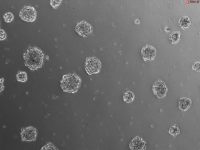Gene Transfer to Articular Chondrocytes with Recombinant Adenovirus
互联网
728
Articular cartilage forms the load-bearing surfaces of diarthrodial joints. Its dense extracellular matrix, composed primarily of water, collagen, and proteoglycans is maintained by a resident population of chondrocytes. These all combine to form a highly organized structure that provides the tissue with its unique biomechanical properties. However, partly because of its avascular nature, cartilage has poor regenerative properties, and damage from disease or injury will often lead to an inferior repair tissue that ultimately fails. One approach to promoting cartilage repair is through the administration of biological agents that enhance matrix synthesis or decrease matrix degradation. Several cytokines are known to promote matrix synthesis in chondrocytes, including the bone morphogenic proteins (BMPs), transforming growth factor-βs (TGF-βs) and insulinlike growth factors (IGFs). Improved repair has been reported following in vivo administration of recombinant IGF-1 (1 ) or BMP-2 (2 ) to cartilage lesions. However, the maintainence of effective intralesional cytokine concentrations for extended periods following administration is hindered by the relatively short half-lives of these proteins. The transfer of cDNAs encoding these cytokines represents an alternative treatment strategy. By this approach, local expression of the gene to cells within sites of damage could achieve sustained, biologically relevant levels of protein that are synthesized locally (3 ).









